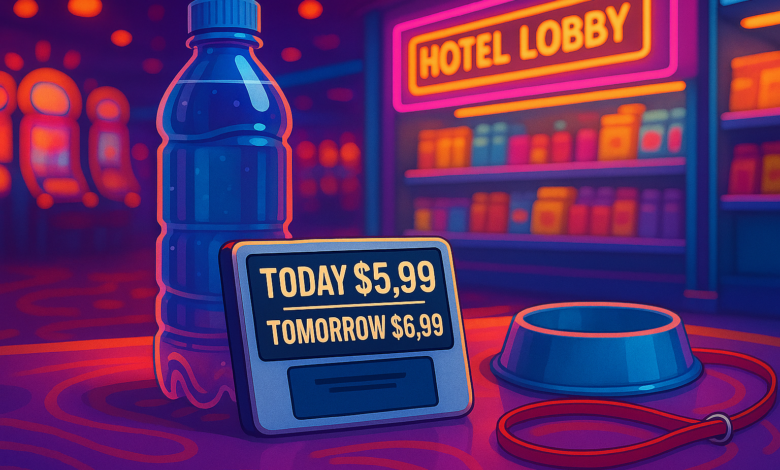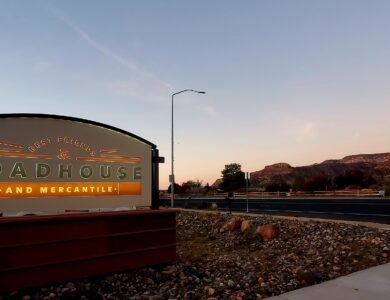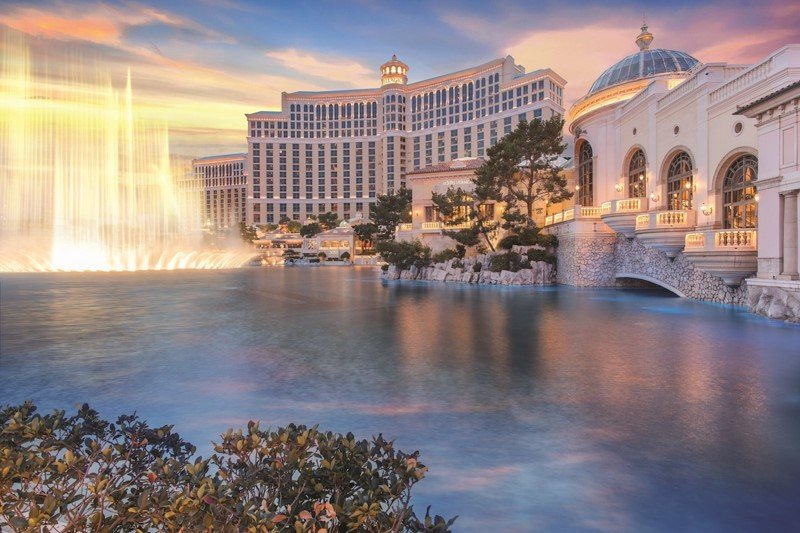We may earn a commission when you click on links across our website. This does not influence our opinions — learn more.
Traveling to Vegas with Your Dog? Budget for These Hidden Hotel Costs

If you’ve been to Las Vegas recently, you might have left with a lighter wallet and greater confusion about how much you actually spent. Forget just resort and parking fees — the newest financial curveball comes from an unlikely place: your hotel’s lobby store. As uncovered in The Independent’s thorough reporting, hotels on the Strip are now rolling out dynamic pricing for everyday items, and it’s changing the ground rules for tourists in major ways. This isn’t about splurging on luxury — these are the basics: bottled water, snacks, sunscreen, and energy drinks. The cost of that bottle of water or snack bar can change not just from trip to trip, but from hour to hour, leaving hotel guests shocked, annoyed, and often feeling taken advantage of.
Why Your Snack Costs More at the Hotel Shop
Hotel lobby shops in Las Vegas, once a backstop for forgotten toiletries or midnight snacks, now serve as testing grounds for a new kind of price experiment. Major Vegas properties such as MGM Grand, Caesars Palace, Bellagio, and Harrah’s have integrated digital price tags and automated point-of-sale systems. These tools allow managers to shift prices instantly, sometimes numerous times in a single day, responding to the ebb and flow of people streaming through the lobby. It’s the same business logic that governs airline and ride-share tickets, but now it touches your breakfast croissant and your post-pool Gatorade.
Imagine the frustration: a guest at Caesars Palace reports that a Snickers and Gatorade combo cost $10 one day, but $14 for the same two items on the next. In another experience, a can of Miller Lite fetched one price in the afternoon but was bumped up by two or three dollars come evening — a change unlinked to any apparent special event. Even water, which should be a staple, fluctuates with alarming inconsistency. One guest found bottled water priced at $6 on a Tuesday, only to watch it shoot up to nearly $7 just a few days later. For anyone visiting with a family, or traveling with a dog in tow who needs regular hydration, these sneaky changes can add up faster than you might expect.
This new model isn’t about inflation or product shortages; it’s pure algorithm-driven profit optimization. Automated systems vacuum up sales patterns, demand spikes, and even local events to adjust prices in real time. It’s a system designed to extract every last dollar from convenience shoppers, capitalizing on moments when guests are most likely to pay without questioning the cost. While it’s a familiar practice for rooms and flights booked online — where you can at least compare prices — hotel lobby shops often don’t reveal the price until you’re at the register. This makes it nearly impossible for guests to make informed choices or budget for these everyday purchases.
For many, dynamic pricing at this level is a bridge too far. It transforms the most routine transactions — buying a drink, grabbing sunscreen, feeding your dog — into moments of stress and second-guessing. The principle that price tags provide transparency is gone, replaced by a sense of gambling on your snack purchase. This approach, while potentially lucrative for hotels, risks eroding guest trust and satisfaction at a time when Las Vegas can’t afford to lose visitor goodwill.
What’s Really Driving These Price Hikes?
The driving force behind the rise of dynamic pricing in Las Vegas hotel lobby shops lies in a relentless pursuit of higher revenue through algorithmic precision. With technologies advancing, hotel brands now harness sophisticated software to analyze countless data points in real time. These include not only how busy the lobby is at any given moment, but also what time of day it is, whether there’s a big event happening nearby, and even broader trends within the city. The systems then automatically raise or lower prices based on predicted willingness to pay, seizing on moments of high demand — such as after a conference lets out, or right before a major game — to maximize profits on even the most basic purchases.
For hotel management, the rationale is straightforward: traditional fixed pricing leaves money on the table. If someone is desperate for bottled water after being out in the 110-degree heat with their dog, why not charge more during those peak hours? The same applies to snacks during late-night casino runs or sunscreen on scorching days when everyone is headed for the pool. Every surge and lull in foot traffic becomes an opportunity to adjust prices upward or downward, squeezing more margin from each guest. This is especially effective in a city where many visitors are already primed to tolerate higher costs for convenience — after all, it’s Vegas.
However, this practice is not without backlash. As The Independent reports, travelers are expressing their dismay both in private feedback and in public reviews. Stories of wildly variable snack prices, and $40 bills for a simple coffee-and-croissant breakfast, circulate widely on social media and review platforms. Tourists, especially those from abroad or out of state, are unaccustomed to such fluidity for basics. They often feel blindsided, not by the price itself but by the sheer unpredictability of it, which runs counter to the fundamental consumer expectation that prices should be displayed and transparent.
Unlike airlines, where price searching is part of the booking ritual, most visitors assume hotel shop prices are set and non-negotiable. The shift to hidden, fluctuating retail prices in the context of a resort vacation is new territory and, for many, deeply uncomfortable. What was meant to be a simple solution for forgotten essentials or pet needs instead becomes another complex decision point. Some travelers are now planning ahead by packing extra snacks, water, and pet supplies — just to avoid the “spin-the-wheel” feeling at the lobby store register.
The long-term impact? While the technology is designed to optimize revenue, it risks damaging the very thing that draws people to Las Vegas: the promise of fun, hospitality, and customer care. As more visitors realize the reality of dynamic lobby pricing, hotels could find themselves caught between short-term profit wins and long-term customer trust losses. It’s a gamble worthy of the Strip itself, but one where the house might not always win.
How Dynamic Pricing Is Changing the Vegas Experience
Dynamic pricing isn’t just a private source of frustration; it’s having real consequences for Las Vegas as a tourism destination. According to recent city data and reports highlighted by The Independent, Sin City saw a 12% drop in visitors in July 2025 compared to the previous year. Hotel occupancy plummeted as well, with early July seeing just 66.7% of rooms filled — numbers that ring alarm bells for an industry built on volume. The problem isn’t just domestic: international visitor counts fell by more than 13% in June, signaling a broad disenchantment with what used to be America’s playground.
Many travelers, especially repeat visitors, cite rising overall costs and the relentless march of add-on fees as prime reasons for skipping Vegas this year or keeping their trips short and frugal. The feeling of being “taken for a ride” is hard to shake when every stage of your stay comes with unexpected costs, from resort and parking fees to the price of a drink in the lobby. For international guests, the situation is even more acute; unfavorable exchange rates compounded by surprise charges can turn a once-affordable holiday into something prohibitively expensive.
The dynamic pricing model — rather than being seen as a clever revenue enhancer — is now firmly in the crosshairs of frustrated tourists. The unpredictability is particularly galling for families and pet owners who rely on hotel shops for essential items. Being unsure if that emergency bottled water for your dog costs $6 or $7 might seem trivial in isolation, but over the course of a five-day stay, these “small” surges add up. It’s become a talking point, both online and at the checkout lines themselves, with guests openly venting about their latest lobby-store sticker shock.
This sharp drop in visitor numbers has prompted some industry analysts and travel writers to warn about Vegas entering a new era of customer skepticism. With so many destinations vying for tourism dollars, Las Vegas can ill afford a reputation for unpredictability and price gouging, even if the technology is legal and the practice not unique to Nevada. Whether this is just a temporary dip or a sign of a structural shift remains to be seen, but the headlines and word-of-mouth coverage paint a vivid picture: Vegas, already famous for its unpredictable luck, now takes that ethos all the way to the hotel mini-mart.
If this trend continues unchecked, the city could find itself facing long-term visitor retention challenges. There’s a growing chorus of former loyalists — tourists who once visited annually and now openly warn friends to “shop outside the hotel” or avoid high-traffic times in lobby stores. Their recourse may be as simple as a walk to CVS or Walgreens, but the reputational damage to Vegas’s famed hospitality could last much longer.
Smart Ways to Avoid Getting Overcharged
If you’re planning a Las Vegas trip and want to avoid getting caught out by the new era of dynamic lobby pricing, the best course is to become a proactive, informed shopper. When it comes to buying drinks, snacks, or basic necessities, one of your smartest moves is to skip the lobby shops altogether and head to external retail chains like CVS, Walgreens, or even Target. These stores tend to maintain fixed prices, which means less risk of being surprised at the register. For travelers with pets, this also helps ensure that purchasing essentials for your dog — water, food, or treats — remains a straightforward and budget-friendly process throughout your stay.
Timing your purchases is another helpful tactic. If you do find yourself needing to use the hotel shop, try to avoid typically busy periods such as check-in times, event nights, or peak pool hours. It’s during these windows that the lobby shops are most likely to increase prices using their newly implemented digital tags and automated systems. Therefore, shopping during quieter parts of the day or night may help you secure a better deal — not guaranteed, but potentially worth a try. Keep in mind, however, that there’s never a true “safe” time in a system designed to fluctuate constantly, so compare prices where you can and keep your receipts to track any changes over the course of your trip.
Before making any purchases, always ask the store staff for the current price — even for the most basic items. Staff themselves are sometimes caught out by rapid behind-the-scenes price changes, so don’t be embarrassed to double-check. If you feel a price is excessive or inconsistent with what you saw previously, politely ask if there’s been an increase or if there’s a reason for the discrepancy. Transparency may be limited, but expressing curiosity — or even mild irritation — can occasionally result in suggestions for more affordable alternatives or an honest explanation of the pricing system at play.
Ultimately, your ability to blunt the impact of dynamic pricing in Vegas lobby shops comes down to research and awareness. Plan ahead for your trip, bring snacks and water for your dog in your luggage, and don’t assume that convenience should be your default in a city where even the price of a Snickers bar turns on a dime. By adopting a more cautious and questioning approach, you’ll find that the “costs of convenience” don’t have to dominate your Vegas vacation. Your wallet — and your pet — will thank you.



